| Year | Population |
|---|---|
| 1970 | 941 |
| 1980 | 1,023 |
| 1990 | 1,063 |
| 2000 | 1,052 |
| 2010 | 1,168 |
| Geographic Data | |
|---|---|
| N. Latitude | 44:58:41 |
| W. Longitude | 70:43:40 |
| Maine House | District 117 |
| Maine Senate | District 17 |
| Congress | District 2 |
| Area sq. mi. | (total) 55.7 |
| Area sq. mi. | (land) 41.6 |
| Population/sq.mi. | (land) 28.1 |
County: Franklin
Total=land+water; Land=land only |
|
[RAANJ-lee] a town in Franklin County, incorporated on March 29, 1855 from a portion of Rangeley Plantation.
The area received it’s name from Squire James Rangeley, a Yorkshire Englishman who, in 1825, began to establish a great estate, including a saw mill, a grist mill and a ten-mile long road to connect to the outside world.
In 1879 the Sandy River & Rangeley Lakes (SR&RL) narrow-gauge railroad was organized. The largest of these railroads in Maine, the SR&RL ran from Farmington, where it interchanged with the standard gauge Maine Central, to Strong, Phillips, and Rangeley.
The town is at the center of the Rangeley Lakes Region with many hotels, campsites, boat launching facilities, recreational opportunities, shops, eateries, a theater and historic places.
The region was the setting for Louise Dickenson Rich’s 1942 book We Took to the Woods. The “Orgone Energy Observatory” established by the controversial Wilhelm Reich may be found here.
The main village is located on Town Cove of Rangeley Lake at the junction of Maine Routes 4 and 16. The historical society occupies the vintage Rangeley Trust Company building on the main street.
Mooselookmeguntic and Cupsuptic lakes are part of the Rangeley Lakes Region. They are located just west of the town of Rangeley, offering long lake frontages in the town, in addition to that of Rangeley Lake.
Rangeley Lake’s Hunter Cove nature preserve consists of three miles of trails through cedar swamp, spruce-fir forest, mature poplars, white pines, and alder thickets. The sanctuary, part of the state game preserve, is maintained by the Maine Audubon Society.
Bald Mountain Public Reserved Land features a one mile trail to the summit that offers panoramic views of Rangeley, Cupsuptic and Mooselookmeguntic lakes and the Height of Land.
Especially popular in the fall with autumn colors, the area contains more than 200 species of wildlife in its 1,873 acres.
Rangeley Lake State Park is in the heart of Maine’s Western Mountains on South Shore Drive east of Route 4. It sports a picnic area, playground, and a trailerable boat launch. Visitors enjoy hiking, picnicking, camping, wildlife watching, photography, winter sports, fishing and hunting. The campground has 50 sites close to the lakeshore where a beach offers commanding views of Saddleback Mountain.
Oquossoc Village
Oquossoc is a village in western Rangeley with frontage on Mooselookmeguntic and Rangeley lakes. The name means “Place at other side of little stream.” In addition to the historic log church, it has marinas, an outdoor sports shop, and a Maine Forest Service station, along with a fire station and a post office.
Form of Government: Town Meeting-Select Board-Manager.
Post Office (2017)
Additional resources
Priest, Gary. History of Rangeley Hotels and Camps. Rangley, Me. G. Priest. 2003. [University of Maine, Raymond H. Fogler Library, Special Collections; Maine State Library]
Hoar, J. Sherman. Pioneer Days of Rangeley, Maine. Lewiston, Me. Lewiston Journal Printshop. 1928. [Maine State Library]
Haines, Zenas Thompson. Squire Rangeley’s Township: Recollections from a Boyhood and Youth on the Upper Androscoggin Lakes, 1837-1849. Rangeley, Me. Highlander Publishing. 1970. [University of Maine, Raymond H. Fogler Library, Special Collections; University of Maine at Farmington, Mantor Library; Maine State Library]
*Maine. Historic Preservation Commission. Augusta, Me. Text from National Register of Historic Places: http://pdfhost.focus.nps.gov/docs/nrhp/text/xxxxxxxx.PDF
Oquossoc Log Church: 84001368.PDF and ** “Oquossoc Log Church celebrates centennial.” http://www.rangeley-maine.com/rangeley-news/oquossoc-log-church-celebrates-centennial/ (accessed March 6, 2017)
Rangeley Inn. “Rangeley Tavern entered in National Register of Historic Places.” From a press release by Kirk F. Mohney, Director of the Maine Historic Preservation Commission. Kirk F. Mohney, Director of the Maine Historic Preservation Commission. “Community News.” April 3, 2018. https://bangordailynews.com/bdn-maine/community/rangeley-tavern-entered-in-national-register-of-historic-places/ (accessed May 29, 2019)
National Register of Historic Places – Listings
Photos, and edited text are from nominations to the National Register of Historic Places researched by Maine. Historic Preservation Commission.
Full text and photos are at https://npgallery.nps.gov/nrhp
Oquossoc Log Church
[Maine Route 4] The Oquossoc Log Church, also known as Oquossoc Union Church, is the only structure of its kind built entirely of spruce logs, including most of the interior furnishings such as the altar and pulpit. Like the 1909 Rangeley Public Library, it was financed by summer residents in this popular recreational area. In 1915 a group was formed which began soliciting funds. The building was completed in 1916 as a non-denominational summer church.*
In 1980, in order to strengthen the church’s numbers and support, the members elected to permit summer residents to become voting members. Together, the year-round and summer residents have continued summer services and have kept the log structure in good repair. The Church holds non-denominational services from late June through August, Sundays at 9 a.m. All visitors are welcome. The members also share the Log Church with the local Jewish community, which holds services there Friday evenings throughout the summer.**
Orgone Energy Observatory
[west side of Dodge Pond Road .65 miles north of Junction Maine Routes 4 and 16] A Freudian analyst born in Austria in 1897, Wilhelm Reich (see home and workplace photo at this link) was trying to prove the energetic reality of the “Libido” which Sigmund Freud had coined. A Freudian analyst born in Austria in 1897, Reich was trying to prove the energetic reality of the “Libido” which Sigmund Freud had coined.
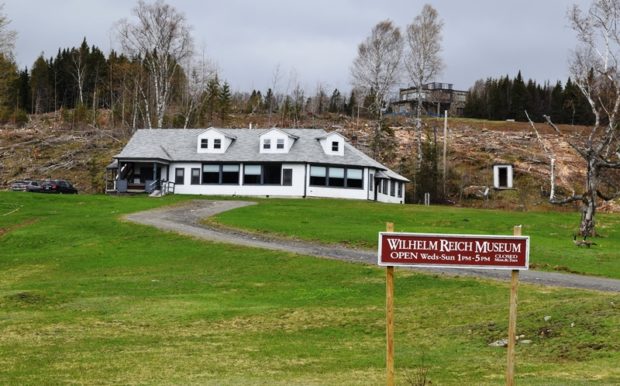
The Reich Museum and, in the upper right, the Orgone Energy Observatory. (2019) [N44° 58′ 53.17″ W70° 42′ 47.00″]
Rangeley (Tavern) Inn
The 1908 Rangeley Tavern was built on the site of an earlier hotel that was moved in 1895. Designed by the Maine architectural firm of Miller and Mayo, the three-story Colonialrevival style building with wraparound porch overshadowed a small two-story section of the earlier hotel that remained on the site and was incorporated into the Tavern.
The building was designed as a complete unit ready to meet the tourist needs of its day. The main block retains the distinctive original porch, cornice and window patterns, but just as many other hotels of the region, the Tavern adapted to meet increased tourist volumes and their changing needs. The added and altered wings and the 1958 Haley Pond motor lodge visibly reflect the property’s adaptation to tourism while retaining the original design and elegance of the main block.
Although the addition of the wings has changed the appearance of the building, the property conveys both its original hotel design and adaptations to meet changing developments in tourism.
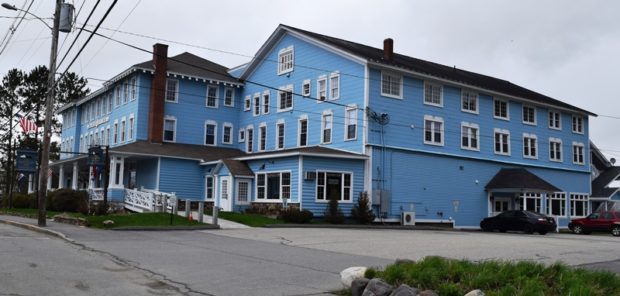
The building was designed as a complete unit ready to meet the tourist needs of its day. The main block retains the distinctive original porch, cornice and window patterns, but just as many other hotels of the region, the Tavern adapted to meet increased tourist volumes and their changing needs. The added and altered wings and the 1958 Haley Pond motor lodge visibly reflect the property’s adaptation to tourism while retaining the original design and elegance of the main block.
Although the addition of the wings has changed the appearance of the building, the property conveys both its original hotel design and adaptations to meet changing developments in tourism.*
Rangeley Public Library
[Lake Street; N44° 57′ 52.24″ W70° 38′ 33.25″] The Library is a small structure of unusual charm and grace suited exactly to the ambiance of this early summer resort region. Built entirely of native Maine materials and designed by Ambrose Walker of New York City in a modified Romanesque Revival style, it rests on a side street that runs down to the shore of Rangeley Lake.
By the 1870s the scenic beauty and relatively cool summers brought an increasing number of seasonal visitors and the area became a popular resort center. As in the case of many another summer colony, Rangeley drew people accustomed to and interested in cultural facilities, not the least of which was an adequate library. At first a largely donated collection of books was housed in a corner of Mrs. Emma McCard’s dressmaking establishment. In 1907 a Library Association was formed and after a brief but successful fund drive land was acquired. Dedication exercises were held on August 12th, 1909.*
Rangeley Trust Company Building
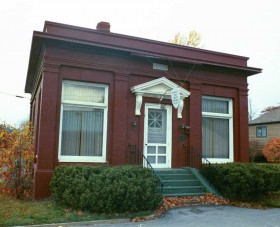 [Main Street] The Rangeley Trust Company Building was the first brick commercial building in Rangeley, built by Harry A. Furbush, a legendary local businessman. Designed in the Classical Revival style by architect William R. Miller in 1905, the Trust building was also Rangeley’s first bank and later served as the town hall before becoming home to the local historical society. Another identical building is in downtown Rockland.
[Main Street] The Rangeley Trust Company Building was the first brick commercial building in Rangeley, built by Harry A. Furbush, a legendary local businessman. Designed in the Classical Revival style by architect William R. Miller in 1905, the Trust building was also Rangeley’s first bank and later served as the town hall before becoming home to the local historical society. Another identical building is in downtown Rockland.
Rangeley, once a small farming community of 238 persons in 1860, began to grow considerably during the last two decades of the 19th century and into the first decade of the 20th century, as a result of its attraction as a “fishing paradise”. The first major hotel built in Rangeley was the 1877 Rangeley House and by 1890 there were five hotels in addition to numerous sporting camps. The proliferation of camps and hotels and increasing numbers of vacationers and sportsmen stimulated growth in Rangeley Village.
When the bank outgrew the building, Furbush built a larger facility in 1922. The building then served as the town hall until 1979. That year the Town deeded the building to the Rangeley Lakes Historical Society, and it now serves as their museum and headquarters. The Rangeley Trust Company Building is historically significant as a building associated with Rangeley’s early commercial development, which was in part due to H. A. Furbish. It is also architecturally significant as a design by architect William R. Miller, who had a thriving Lewiston business at the time of the building’s construction.*


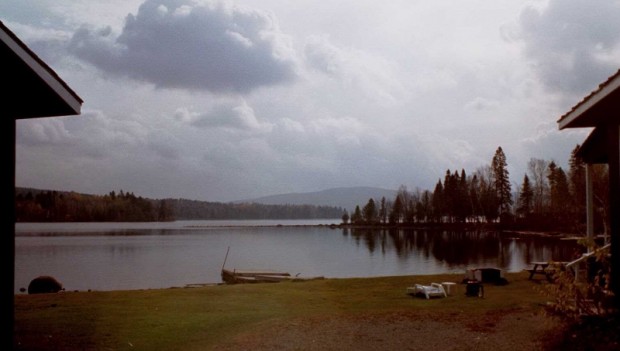
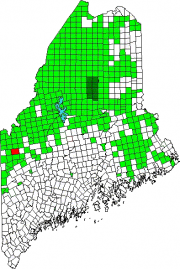


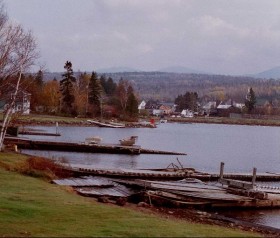



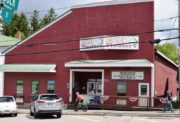
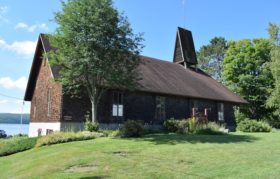
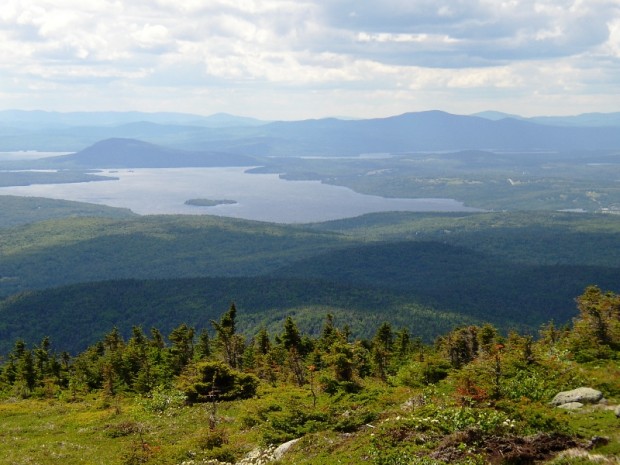
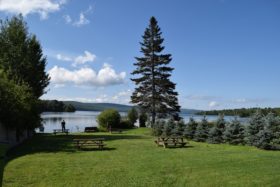
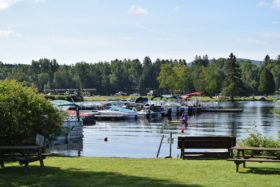
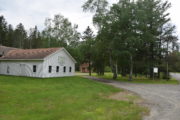
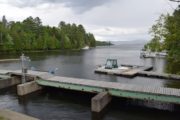
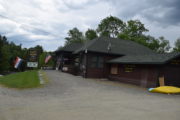
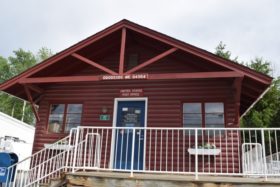
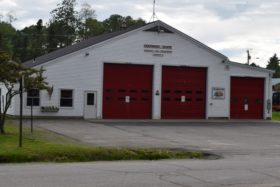
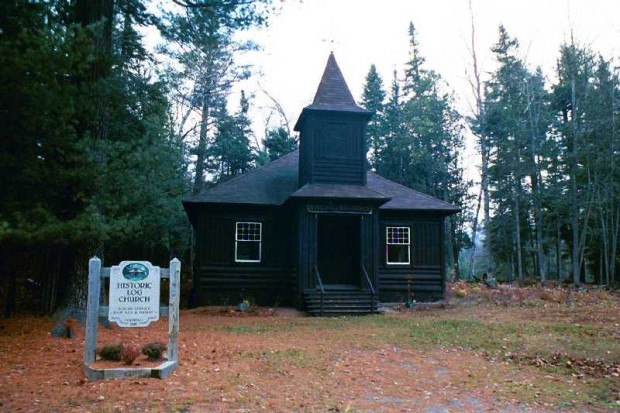
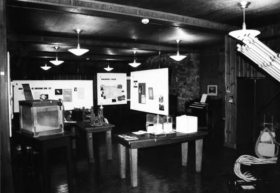
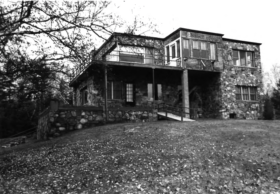
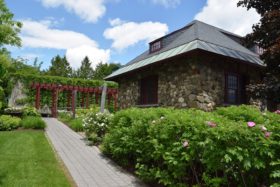
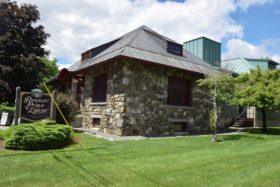
Does anyone know who was the first postmaster of Rangeley Lakes?